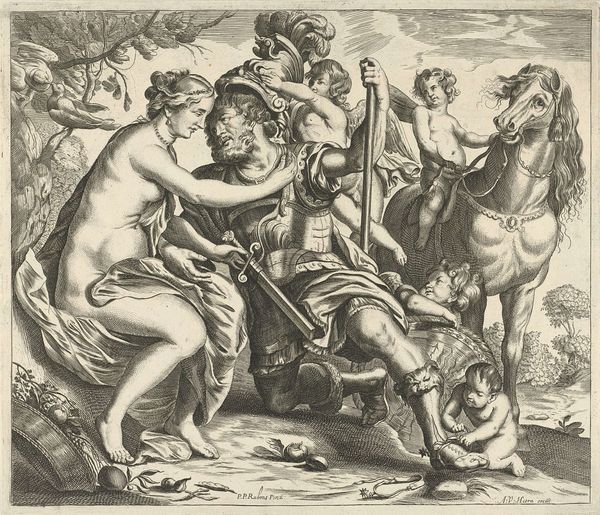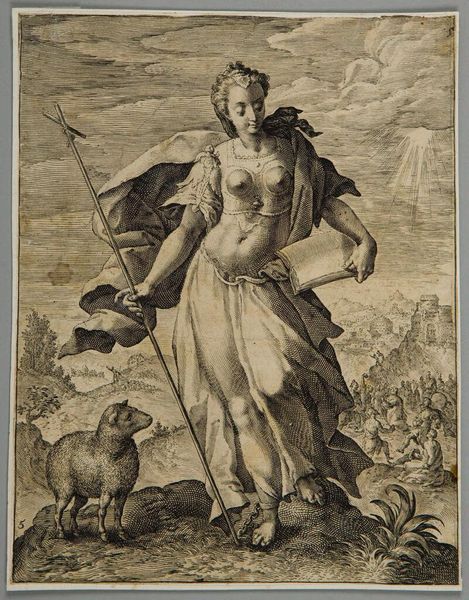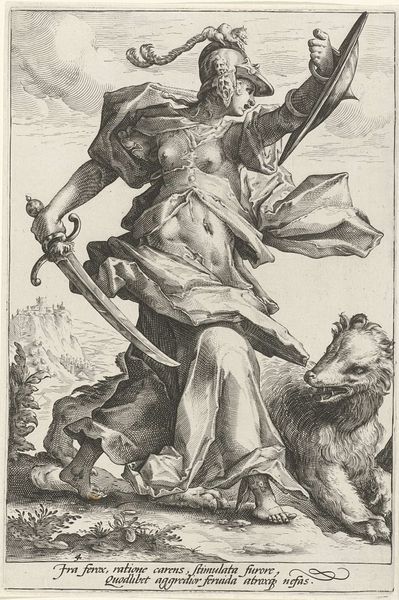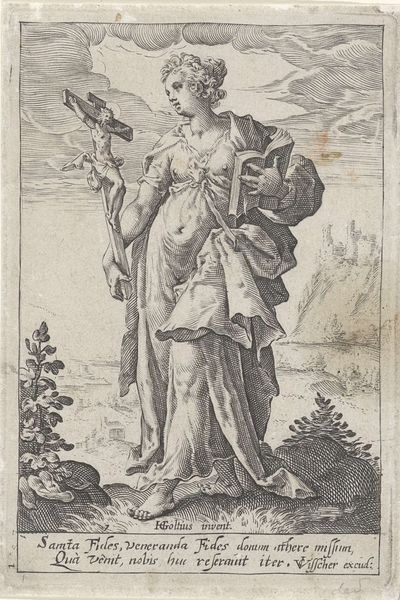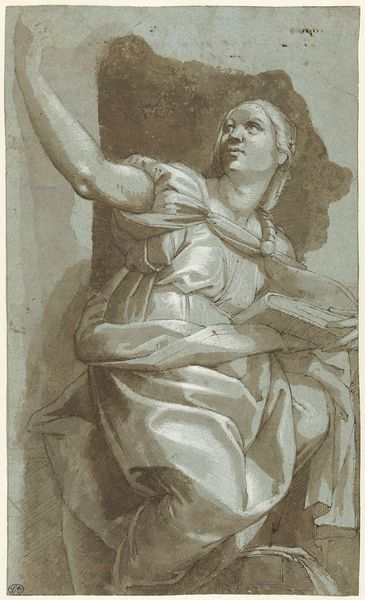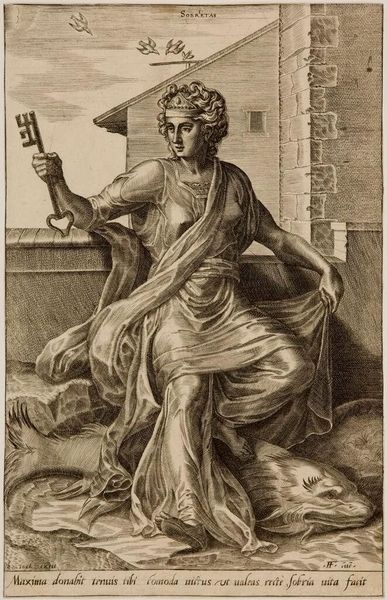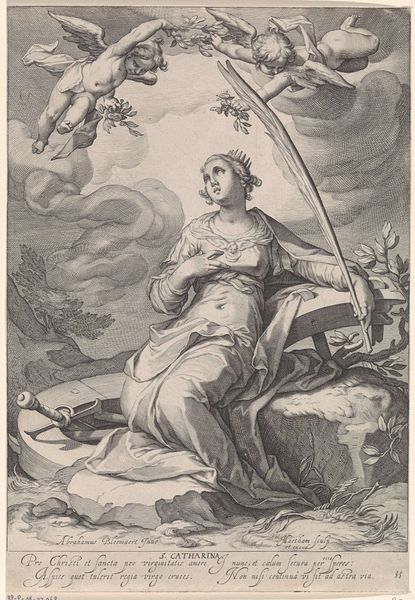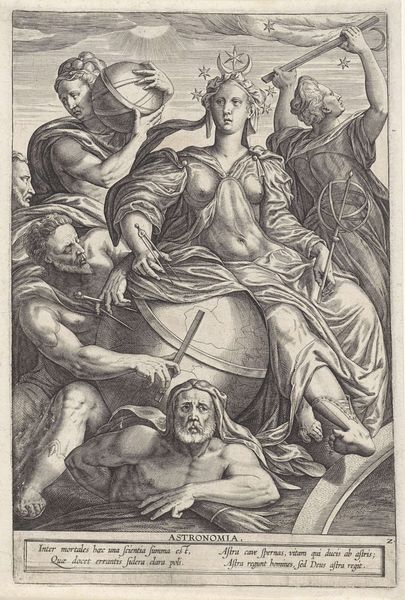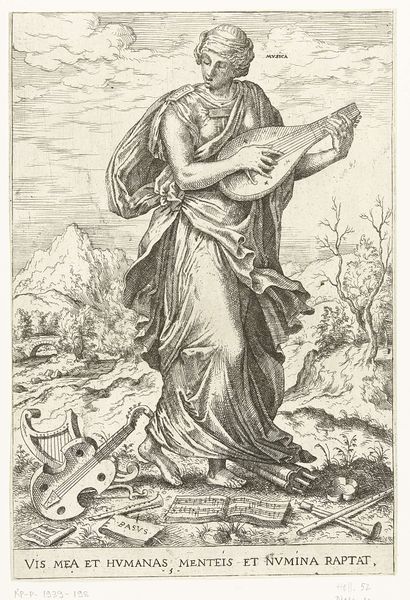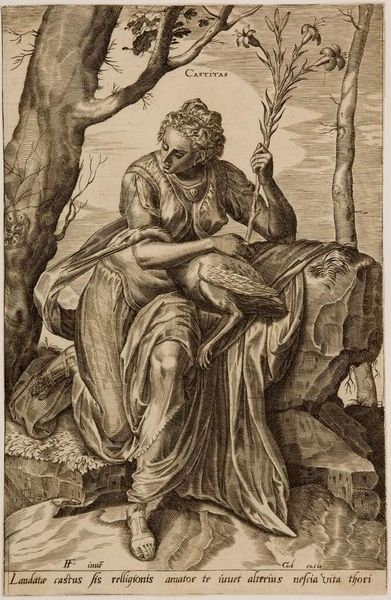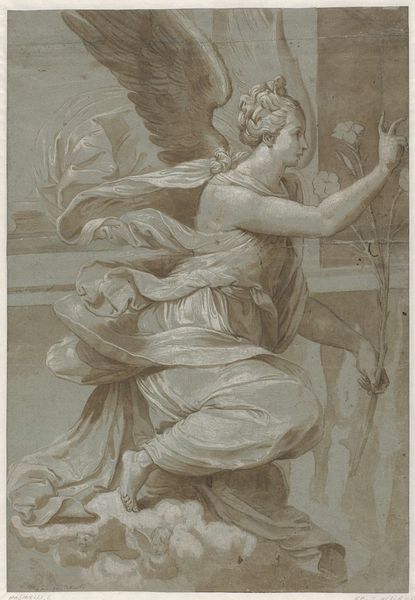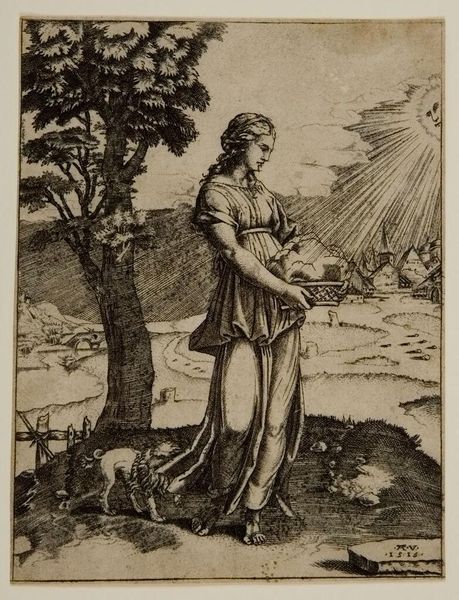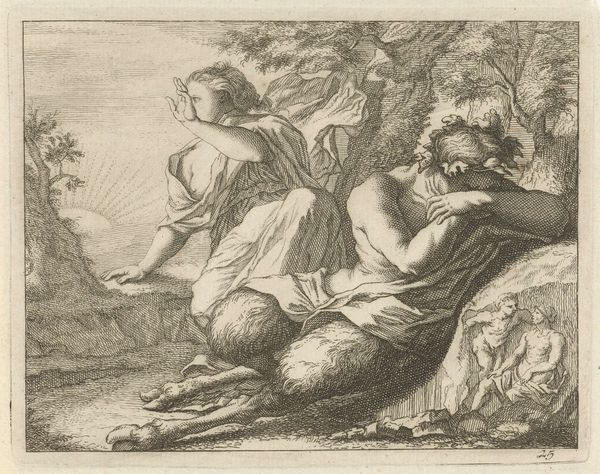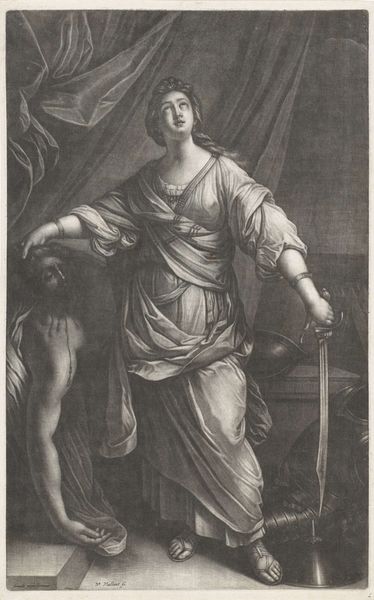
painting, oil-paint
#
portrait
#
venetian-painting
#
allegory
#
painting
#
oil-paint
#
oil painting
#
mythology
#
history-painting
#
italian-renaissance
#
portrait art
Copyright: Public Domain: Artvee
Curator: Paolo Veronese, a key figure in the Venetian Renaissance, created this oil painting, titled "The Peace", around 1551 or 1552. I find it particularly compelling given its complex layers of allegorical meaning and artistic fabrication. Editor: Immediately, I’m struck by this sense of slightly uneasy calm. It's all rather cool colors and languid poses, but something feels...off. Like the peace is a thin veneer over something much darker. Curator: That's a brilliant observation. Note the specific production of color, carefully layered oil glazes over the canvas create that feeling. What materials went into producing those exact tonalities to create the effects you’re describing? I believe there are socio-historical ramifications of Venetian art production to consider here. Editor: It's a rather romantic picture, isn’t it? She’s perched upon what looks to be a rocky outcrop; that contrapposto! And look at the almost carelessly discarded armor just over her right shoulder… It’s so artfully disarranged! I imagine someone orchestrated it all carefully to convey the right idea… Curator: Yes, the allegory itself—this figure of Pax, the Roman goddess of peace, triumphing over war—was not accidental, and it’s important that Veronese deployed various types of labor here, from the procurement of oil paint to the application of such pigments that allowed the painting to successfully serve the propagandistic and decorative aims of its elite patron. Editor: A subtle propaganda, perhaps, which allows it a level of beauty. It’s about harmony; a gentle moment captured through Veronese’s own artistic license, but grounded, isn't it, in those realities of 16th-century Venetian power and production you're referencing? Curator: Precisely. It's impossible, for me at least, to look at the serene subject without thinking about the Venetian economy churning away underneath. That system, which included the control of trade routes and the intense demand for art and luxury goods within and without Venice proper is materially inscribed upon this very picture! Editor: And yet, it gives pause. A fragile thing, this painted peace; a brief respite before the next act begins… Still, Veronese gifts us with something quite extraordinary. Curator: It truly gives one food for thought about material conditions inherent to art’s historical reception. Thank you.
Comments
No comments
Be the first to comment and join the conversation on the ultimate creative platform.
